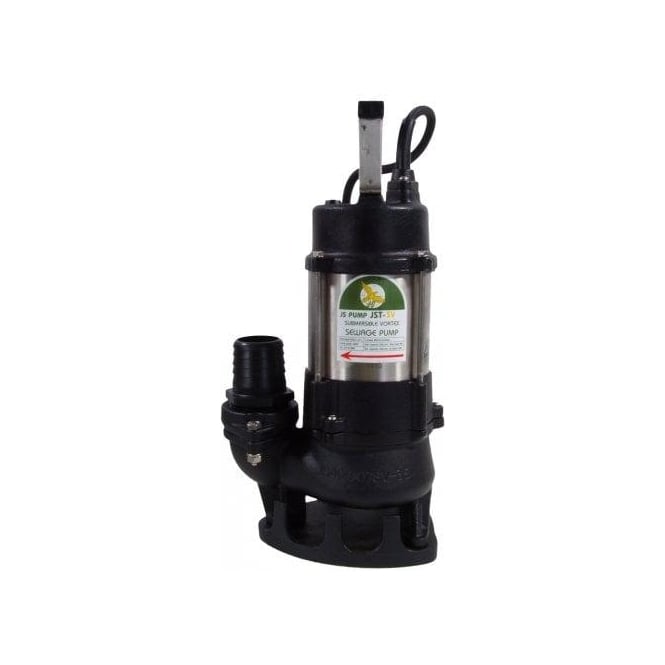In the world of fluid management, submersible pumps have emerged as indispensable tools for numerous industries. Whether it’s agriculture, construction, or wastewater treatment, these versatile pumps offer unparalleled efficiency and reliability. If you’re a professional looking to optimize fluid operations in your business, understanding the ins and outs of submersible pumps is vital.
This blog post will guide you through everything you need to know about submersible pumps. From their basic functionality to the various types and applications, we’ll explore how these powerful devices can benefit your industry. Let’s plunge into the details and discover how submersible pumps can revolutionize your fluid management needs.
What is a Submersible Pump?
Definition and Basic Functionality
A submersible pump is a type of pump designed to be submerged entirely in the fluid it is meant to pump. These pumps are hermetically sealed to prevent water from entering the motor and causing a short circuit. The primary function of a submersible pump is to push fluid to the surface by converting rotational energy into kinetic energy, and finally into pressure energy.
Key Components
Submersible pumps consist of several crucial components:
- Motor – The heart of the pump, which converts electrical energy into mechanical energy.
- Impeller – A rotating part that generates velocity by spinning in the fluid.
- Pump Housing – Protects internal components and ensures smooth fluid flow.
- Seal – Prevents fluid from seeping into the motor.
How They Work
The process begins with the motor driving the impeller, which then spins rapidly to create a centrifugal force. This force pushes the fluid towards the pump housing and then out through the discharge pipe. The hermetic seal ensures no fluid enters the motor, allowing the pump to operate efficiently underwater.
Advantages of Using Submersible Pumps
Efficiency and Energy Savings
One of the significant benefits of submersible pumps is their high efficiency. Since they operate underwater, they don’t require priming and are less likely to experience cavitation—a condition where vapor bubbles form and cause damage. This results in energy savings and reduced operational costs.
Versatility in Applications
Submersible pumps are highly versatile and can be used in a variety of applications, from draining flooded basements to irrigating agricultural fields. Their ability to handle both clean and dirty water makes them suitable for diverse industries.
Low Maintenance
Thanks to their robust design and sealed components, submersible pumps require minimal maintenance. This translates to fewer downtimes and lower repair costs, making them an economical choice for long-term use.
Types of Submersible Pumps
Well Pumps
Well pumps are designed to lift water from underground wells. They are commonly used in residential, agricultural, and industrial settings to provide a consistent water supply.
Sump Pumps
Sump pumps are typically used to remove accumulated water from basement sumps. They are crucial in preventing basement flooding and water damage in residential and commercial buildings.
Utility Pumps
Utility pumps are versatile and portable, ideal for various temporary water transfer tasks such as draining hot tubs, water tanks, and other small-scale applications.
Sewage Pumps
Sewage pumps are specifically engineered to handle waste solids and liquids. They are essential for wastewater treatment plants and sewage systems to transport waste to processing facilities.
Environmental Impact and Sustainability
Energy Efficiency
Submersible pumps are often more energy-efficient than other types of pumps, reducing their environmental footprint. By optimizing fluid transfer processes, these pumps minimize energy consumption, contributing to sustainability.
Waste Management
Sewage and wastewater pumps play a vital role in waste management by efficiently transporting waste to treatment facilities. This helps in reducing environmental contamination and promoting healthier ecosystems.
Eco-Friendly Materials
Many manufacturers now offer submersible pumps made from eco-friendly materials. These pumps are designed to be recyclable and reduce environmental impact, aligning with sustainable practices in industrial applications.
Real-World Applications of Submersible Pumps
Agriculture
In agriculture, submersible pumps are used for irrigation and groundwater extraction. They provide a reliable water source, essential for crop growth and livestock management, ensuring efficient agricultural operations.
Construction
Construction sites often require dewatering to remove excess water. Submersible pumps are ideal for this task, keeping construction areas dry and safe, preventing delays and structural damage.
Residential Use
For homeowners, submersible pumps are invaluable in managing water levels in basements, wells, and water tanks. They provide peace of mind by preventing water damage and ensuring a steady water supply.
Case Study: Submersible Pumps in Urban Infrastructure
The Challenge
A city faced frequent flooding in its subway systems, causing disruptions and damage. Traditional pumps were insufficient in managing the water levels, necessitating a more robust solution.
The Solution
The city implemented high-capacity submersible pumps capable of handling large volumes of water efficiently. These pumps were strategically placed in flood-prone areas, equipped with sensors for automatic activation during heavy rains.
The Results
Since the installation of submersible pumps, flooding incidents have significantly reduced. The pumps’ reliability and efficiency have ensured uninterrupted transportation services, showcasing their effectiveness in urban infrastructure.
Future Trends in Submersible Pump Technology
Smart Pumps
The integration of IoT technology in submersible pumps is on the rise. Smart pumps equipped with sensors and connectivity features allow for real-time monitoring, predictive maintenance, and remote control, enhancing operational efficiency.
Advanced Materials
Research and development in advanced materials are leading to more durable and efficient submersible pumps. Innovations in corrosion-resistant alloys and high-performance plastics contribute to longer pump lifespans and reduced maintenance.
Renewable Energy Compatibility
Submersible pumps compatible with renewable energy sources, such as solar and wind power, are gaining popularity. These eco-friendly pumps offer sustainable solutions for various industries, reducing dependence on fossil fuels.
Conclusion
Submersible pumps are a powerful asset for any business dealing with fluid management. From agriculture to construction and wastewater treatment, their versatility and efficiency make them a crucial tool for optimizing operations. By understanding the various types, applications, and benefits of submersible pumps, you can make informed decisions to enhance your business processes.


